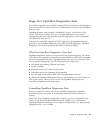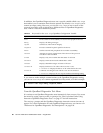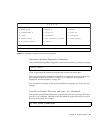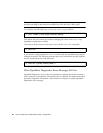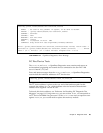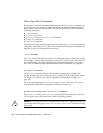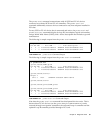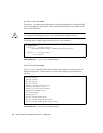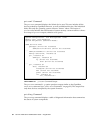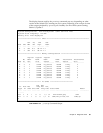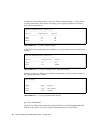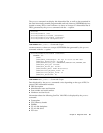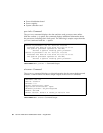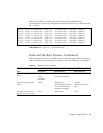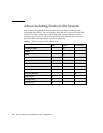
Chapter 6 Diagnostic Tools 93
Stage Three: The Operating System
If a system passes OpenBoot Diagnostics tests, it normally attempts to boot its
multiuser operating system. For most Sun systems, this means the Solaris OS. Once
the server is running in multiuser mode, you have recourse to software-based
diagnostic tools, like SunVTS and Sun Management Center. These tools can help you
with more advanced monitoring, exercising, and fault isolating capabilities.
Note – If you set the auto-boot OpenBoot configuration variable to false, the
operating system does not boot automatically following completion of the firmware-
based tests.
In addition to the formal tools that run on top of Solaris OS software, there are other
resources that you can use when assessing or monitoring the condition of a Sun Fire
V490 server. These include:
■ Error and system message log files
■ Solaris system information commands
Error and System Message Log Files
Error and other system messages are saved in the file /var/adm/messages.
Messages are logged to this file from many sources, including the operating system,
the environmental control subsystem, and various software applications.
For information about /var/adm/messages and other sources of system
information, refer to your Solaris system administration documentation.
Solaris System Information Commands
Some Solaris commands display data that you can use when assessing the condition
of a Sun Fire V490 server. These include the following commands:
■ prtconf command
■ prtdiag command
■ prtfru command
■ psrinfo command
■ showrev command
This section describes the information these commands give you. For instructions on
using these commands, turn to “How to Use Solaris System Information
Commands” on page 197, or look up the appropriate man page.



